
Atypic at MozCon 2023
15
minute read time
In August, our Digital Marketing Team here at Atypic (virtually) attended MozCon, a conference that explores the future of search through presentations from industry experts. We’ve compiled key insights from the conference such as the power of video and sound in modern marketing, effective website strategies, AI-driven efficiencies, and a user-centric approach to SEO. Join us as we explore the evolving digital marketing landscape and the impactful takeaways from MozCon 2023.
Harnessing the Power of Video and Sound in Modern Marketing
In the digital age, the consumption of online content has evolved dramatically over the past few years. Among the diverse forms of media, video and sound has emerged as a compelling and effective medium for conveying information, engaging audiences, and driving brand recognition. Throughout MozCon, many speakers emphasized the importance of video, illuminating the reasons behind not only its newfound popularity, but more importantly, its effectiveness as well.
Crystal Carter's research revealed that the average video watch time per user, per day is a staggering 84 minutes. This statistic alone proves that users are dedicating a significant portion of their daily routine to watch videos. The preference for video was further emphasized by Crystal, revealing that 9 out of 10 consumers desire videos from brands, yearning for a more visual and engaging experience from companies. 55% of consumers use video while shopping IN store, showing that it truly plays a pivotal role in influencing purchasing decisions and helping users to make more informed choices.
The Power of YouTube
YouTube, the world’s largest video-sharing platform, has emerged as a pivotal player in the new age of video and sound, with 48 million ranking pages for YT in the SERP, and 650k+ featured snippets in the US. There is an extensive list of notable reasons as to why YouTube should be a marketers preferred source. Their compatibility with Google’s indexing parameters, including pixel size, supported formats, full video schema, and title consistency is reason number one as to why YouTube is on top when it comes to video. Furthermore, the platform offers native play in the search results, and the dynamic nature of YouTube allows for the same video to rank in the SERP in multiple areas, maximizing exposure across the board. This aligns with the philosophy of “being everywhere search engines can find you,” as coined by Lily Ray.
TikTok - The New Search Engine
The rise of platforms like TikTok, as indicated by Carrie Rose, further showcases video’s versatility. And shockingly, rather than shying away from the competition, Google has in fact embraced the short-form video app, enhancing its visibility within the search results. Many speakers throughout MozCon emphasized that Google wants to please the users, and recognizes that short, engaging content is what is currently preferred.
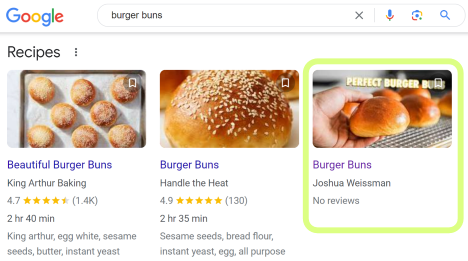
The Importance of Video & Engagement
Besides video in just the SERP, the value of video on webpages was also discussed, underscoring the importance of including transcripts to facilitate natural human language, and enable search engines to crawl content effectively. This relates back to Lily Ray's point during her presentation, stating that “audio is the future of search.”
Furthermore, encouraging user comments and engagements, as exemplified by Crystal Carters Burger Buns example (shown above), can make a drastic difference on how your on-page video content ranks on Google. The example shows a video that lacked any optimizations, however, because it had received 184 comments, it was therefore showing up in the featured snippet, competing with videos that were not only optimized, but had hundreds or thousands of reviews as well.
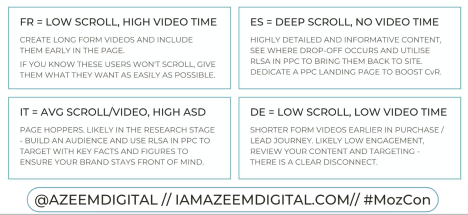
User Behavior
Azeem Ahmad’s insights into tailoring videos around different user segments further displays the importance of understanding audience preferences and behaviors. By deciphering which videos resonate with specific user types, marketers can refine their content strategy and deliver a more personalized experience.
Crafting a Compelling Website: Structure & Content for All Users and Search Engines
The art of creating an impactful website involves a balance between pleasing Google, pleasing the user, and pleasing the client. As businesses strive to connect with their audiences and establish their online presence, employing effective strategies for website structure and content becomes crucial.
A common theme throughout MozCon 2023 was acronyms. Lots and lots of acronyms. Lets dive into some of the key ones down below.

FAB - Features, Advantages, Benefits
Andi Jarvis introduced the FAB principle - Features, Advantages, and Benefits - an approach that encourages marketers to focus on showcasing the benefits of their products or services first, rather than simply listing features. The reasoning behind this? Users want to know how you will help them achieve their goal or solve their problem, not the nitty gritty details that may not even make sense to them. Andi’s statement “don’t sell the steak, sell the sizzle,” captures the essence of this philosophy.
The 4 E's
Ross Simmonds discussed the 4 E’s: Educate, Entertain, Engage, and Empower. This framework emphasizes building trust through educating your users, creating connections through entertainment, fostering community engagement, and ultimately, empowering users to become part of a “tribe”. This multi-faceted approach not only gives marketers a structure to create more user-focused content and websites, but also nurtures long lasting relationships with customers moving forward as well.
EEAT
Miracle Inameti-Archibong’s EEAT model underlined the importance of establishing authority and trust with your content. Leveraging experience and expertise with reputable authors, qualifications, and brand values while displaying authority with link building, citations, awards, and accreditations are three pillars of this framework. Trust being the last point, encourages the use of reviews, consistency, website UX, and awards to further ensure both the user and Google are pleased.
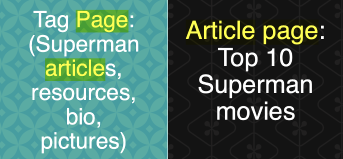
Content & Internal Links
Lily Ray introduced an eye opening point of using descriptive internal links rather than the generic “Learn More.” She also brought up the point of structuring content with one tag page and one article page, bettering one's chances of ranking in the SERP, without generating duplicate content.
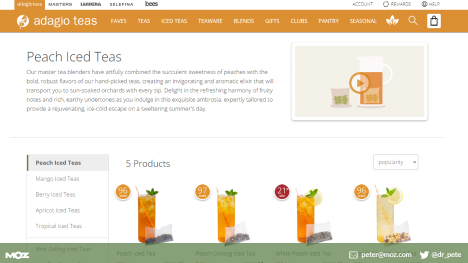
Lorem Ipsum
Using AI rather than lorem ipsum for proposal templates was another short but big recommendation made by Pete Meyers. This will allow clients to fully visualize the website design that you have created, and spend little time doing so with the speed of AI.
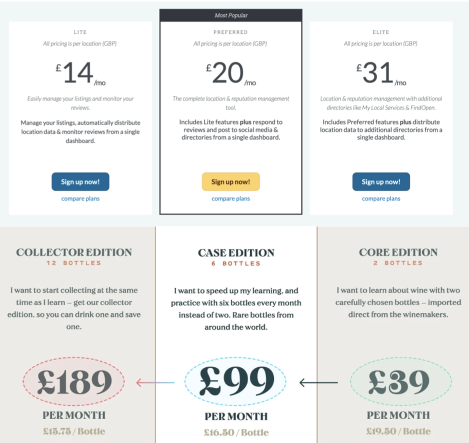
Product Pages
Another point in regards to on-page content made by Andi Jarvis was including a box around your most popular product and/or price to entice users to select that product or service. OR looking at it from a different perspective, pricing high to low, hence tricking the users mind, because as a consumer we are so used to seeing products listed low to high.
Understanding Your Target Audience
The last key standout in regards to website content was made by Jason Dodge, who stated that “a lack of customer understanding leads to misalignment.” Jason highlighted throughout his whole presentation the need to craft content that resonates with the customers’ pain points and vocabulary, and that industry pages are currently missing their mark. Reframing industry copy into relatable language and keywords for the user bridges the gap between the people that are making it and the people that need it.
Supercharging Efficiency: Harnessing the Power of AI for Streamlined Business Workflows
In the dynamic landscape of AI, the ChatGPT platform has emerged as a tool that gives searchers a new landscape to search in. ChatGPT is a more imaginative and creative responder than Google and is capable of addressing queries where the user's intent might not be fully formed. This makes it particularly advantageous for cases where you have a general idea of what you're seeking but aren't entirely sure how to phrase it. Nevertheless, it's important to note that ChatGPT's responses, while imaginative, should be cross-referenced for accuracy.
On the other hand, Google focuses on more factual and concise responses. It excels at addressing specific inquiries, catering to users who have a clearer understanding of what they're looking for. Google's search interface, while powerful, can sometimes feel limiting due to its reliance on precise queries. Even the search box itself is a bit restrictive in the sense that you feel deterred from inputting long queries. ChatGPT, in contrast, encourages exploration in a manner that traditional searches may not have facilitated.
AI also assists in workflow efficiency across various industries. Take the example of Search Engine Optimization (SEO) specialists who typically invest considerable time in researching blog topics, keywords, content creation, optimization, graphics, and technical details. With AI tools, this entire process could be streamlined to under two hours, possibly even as little as an hour and a half. This speaks to the transformative impact AI can have on efficiency. Along with assisting in the blog creation process, AI can also be utilized to create niche graphics, optimize meta, and create schema.
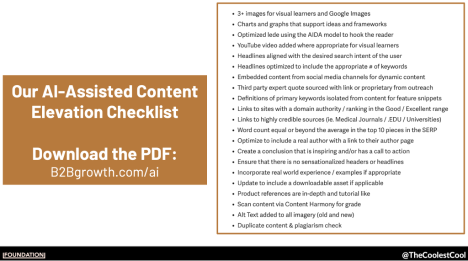
The Benefits of AI in SEO
Ross Simmonds demonstrated how the blog writing process can be done at scale with the assistance of AI. He provided AI with trending, relevant keywords, asked it to create blog topics from those keywords, then content briefs, then the actual blogs.
Now, with the first draft of the blog done, you can use the Elevation Checklist, which includes various AI tools you can utilize throughout your content creation process, to make your content more human-like and optimized. He found the whole AI process took him just 85 minutes, which can be a real time saver when applying this method during the creation of blogs for clients. Looking at a real world example, Ross also mentioned CNET tried this out; they created hundreds of articles using AI, and these articles actually generated 5.1 million annual visits and 2,400+ backlinks! In just 85 minutes, Ross Simmonds' AI-powered approach exemplifies the efficient generation of blog content. Real-world examples like CNET's further highlight AI's potential in revolutionizing content creation for enhanced engagement and results.
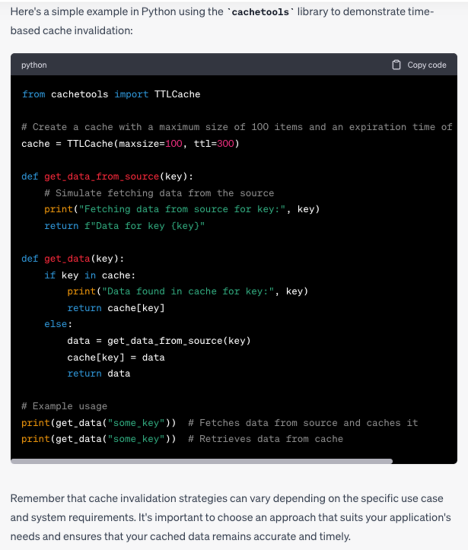
AI For Design and Development
For Graphic Design, AI serves as a wellspring of design inspiration and research. In the sphere of Web Development, AI can function as a learning aid for languages like Python, while also serving as a troubleshooter, offering quick solutions to coding questions or issues. Even within Client Services, AI has a role to play – from formulating professional email communication to tackling simple client queries that may be beyond an individual's immediate expertise.
In essence, the emergence of ChatGPT and similar AI technologies introduces an exciting dimension to problem-solving, creativity, and efficiency across a wide range of industries. As these tools continue to evolve, they will undoubtedly become integral components of modern workflows, ushering in a new era of productivity and innovation.
User-Centric Approach: Elevate Your Business by Prioritizing People Over Algorithms
During a Google algorithm update, Google makes significant, broad changes to search algorithms to ensure searchers get the most helpful and reliable results.
Central to this process are the "Quality Raters" who provide crucial feedback to Google. These raters assess websites based on the criteria of EEAT – Experience, Expertise, Authoritativeness, and Trustworthiness – and whether or not the content has met user needs.
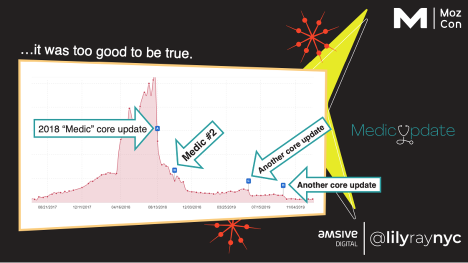
Reacting to Core Updates
While it's true that Google's core updates can sometimes lead to substantial fluctuations in website traffic, it's important for SEOs to avoid being too reactionary. Many speakers at MozCon stated, "SEOs tend to chase the algorithm, but Google is chasing the user."
Lily Ray displayed exactly how detrimental the Google Core updates can be on traffic to a website when you are chasing the algorithm, and it may take years to recover. In this case, Lily Ray had an SEO strategy that was seemingly working very well, but then the Medic update had a huge impact on traffic to the site. Google's evolving nature means that rather than solely responding to every algorithmic shift, marketers should focus on understanding and serving their target audience's needs effectively.
Listening to users is essential for marketers seeking to succeed in the digital realm. This involves harnessing customer feedback and tapping into the insights of the sales team to gain a holistic understanding of user preferences and pain points. To truly connect with users, it's crucial to prioritize firsthand experiences and perspectives. This could involve heeding insights from the media, customers, and embracing the power of user-generated reviews (UGC). You should also allocate marketing budgets to the platforms and channels where consumers spend their time ensuring that your message reaches the right audiences.
Lastly, in an era of instant gratification, user impatience underscores the importance of delivering swift and relevant results. Elements like the "Jump to recipe" button on recipe blogs and the "At a glance" sections in news articles cater to users' need for easy access to the main information they’re looking for. A way to implement this user focus is when designing websites, the focus should revolve around the user's journey and interaction. By putting oneself in the shoes of the consumer, marketers can ensure that the design, content, and overall experience align with users' expectations and behavior, ultimately forging more meaningful connections.
Chasing the User Not the Algorithm
In the ever-evolving landscape of the digital age, the world of search engine optimization (SEO) has witnessed a seismic shift from a quest for rankings to a relentless pursuit of enhancing user experiences. This transition has been addressed aptly in Jes Sholz's presentation titled "Mind the Gap: Bridging Generational Differences in SEO."
The Google ecosystem, initially synonymous with its search engine, has formed into a powerful system of applications and tools. From documents and emails to maps, translation, communication via Hangouts, calendaring, and advertising, Google's influence spans far beyond traditional search.
What was once perceived as a search engine has metamorphosed into a multifaceted social network, an evolution catalyzed by Google's shift towards a more user-centric approach over the last dozen years. The transition from a link based algorithm to one centered around visual previews, aggregated content, and user-friendly features exemplifies this shift.
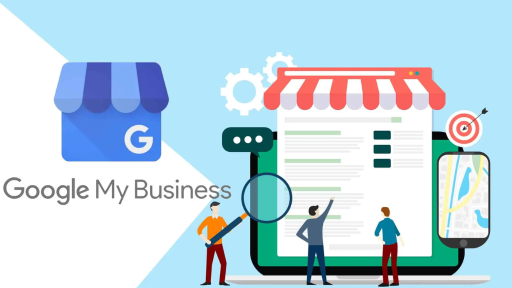
Google My Business and E-Commerce
Notably, Google's endeavors are also imploding upon the realm of e-commerce. With features allowing users to compare products, add items to their carts, and even make purchases directly through the platform, Google is reshaping the way consumers interact with online shopping.
During the conference, our team was shocked when we heard the statistic that only 7% of clicks occur to your e-commerce site when you are ranking in 1st place on Google. The rise of Google My Business, and its user-friendly interface facilitating easy access to contact information, directions, reviews, and ratings, the need to visit websites is dwindling, especially those of small businesses.

Google Lens, Google Shopping, and SEO
Lidia Infante's presentation on "Headless SEO: I’m Sorry, But This Is Happening" further underscores the evolving landscape of search and user experience. The surge in visual searches, exemplified by Google Lens processing a staggering 12 billion visual searches per month, demonstrates a fourfold increase in just two years. This innovation not only streamlines shopping experiences but also highlights the necessity of content reusability in modern SEO strategies.
Growing Your Brand’s Knowledge Graph
The symbiotic relationship between brands and Google is propelled by the Knowledge Graph. This framework enables Google to discern and establish connections between brands and information, a process informed by the analysis of backlinks, entities within web pages, and user behavior. The value of a brand is now intrinsically tied to the quality and distribution of its content across the Google ecosystem, amplifying visibility and brand equity.
In conclusion, Google's transformation from a search engine into a holistic online platform, complete with e-commerce features and interactive tools, underlines the company's dedication to facilitating seamless user engagement. This evolution necessitates a shift in SEO strategies, where content reusability and brand visibility across the Google ecosystem play a central role in cultivating online success. As we stand at this juncture of generational differences and technological evolution, it is crucial to navigate the complexities of this landscape and forge a relationship with Google to foster growth, engagement, and brand building.



